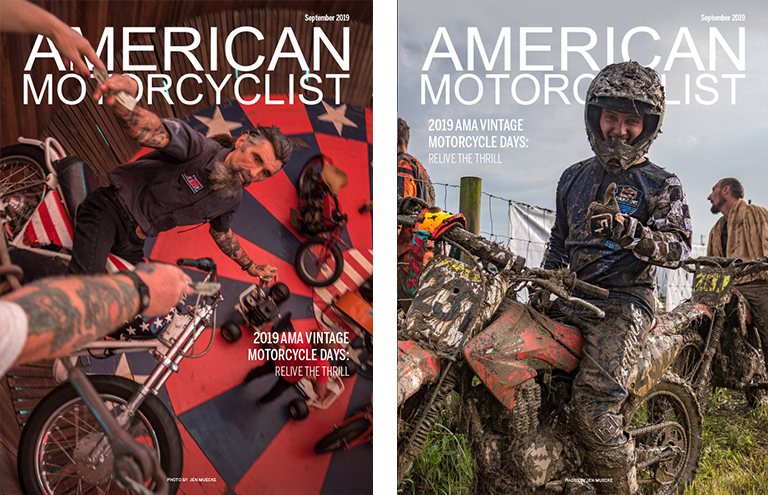AMERICAN MOTORCYCLIST September 2019
Western Adventure
Road Tour Nine Years In The Making
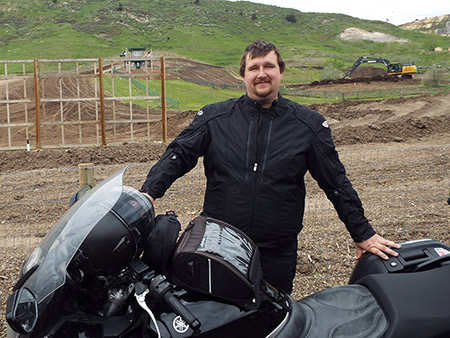 By Michael Marino
By Michael Marino
With more 100,000 miles of road riding before I was 35, I’ve done a fair bit of motorcycle touring.
But the five-day trip I took in late May from Columbus, Ohio, to Denver, Colo., was more meaningful to me than all of my previous tours combined.
The trip was the end of nine years of waiting to ride back to the western United States, as well as a lesson in the difference between experience and overconfidence.
Each stop on the trip was a victory, and I accomplished almost everything I had planned. Yet, I felt unfulfilled as I pulled into my garage at the trip’s end.
Why wait NINE years?
My 2019 trip was a partial re-creation of the trip I took nine years earlier.
After I graduated with my master’s degree in 2010, I treated myself to an 11-day trip from Buffalo, N.Y., to Salt Lake City, Utah, to see the FIM Superbike World Championship’s only North American round of the season at Miller Motorsports Park (now known as Utah Motorsports Campus).
I rode a 1998 Suzuki Bandit 1200S, and that trip is still my longest motorcycle tour, in terms of mileage and number of days. The trip made me realize just how geographically diverse the United States is, and I was determined to go back West the next year. I had scrounged up just enough money to make it to Salt Lake City and back and had my luggage all packed.
All I had to do was change my Bandit’s oil. For the previous oil change, I didn’t have a new crush washer to use so I re-used the old one. That was a big mistake. As I loosened the oil drain plug, the overtightened plug stripped some of the threads out of the drain hole.
I was devastated. By the time I got things fixed, the money I had set aside for travel had been spent.
I left my saddlebags packed and sitting in my living room, ready to go the moment I had the funds to do so. The disappointment set in again when I moved that year and had to unpack them, signaling my surrender to my circumstances.
Every year since then, I planned a trip back to Salt Lake City. Each year I had the time to go, I didn’t have the money, and each year I could afford it, I didn’t have enough time off from work to swing it.
I did some other really good tours, including one with my friend “Speedy” Dan Zosky (that’s a story all by itself), but nothing that approached my 2010 tour.
Heading West
This year, I again scrounged up enough money to go back West, and had just enough time off to do a partial recreation of my 2010 trip.
Speedy Dan had since moved to Denver, so I decided I would visit with him for part of a day and see the things along my route that I hadn’t had time to stop and see in 2010.
Among the planned stops were the Iowa 80 Trucking Museum in Walcott, Iowa; the Archway museum in Kearney, Neb.; and the Tree in the Rock monument near Cheyenne, Wyo.
The Tree in the Rock was the most significant stop of the trip. It was something I viewed on the way back from Salt Lake City in 2010, and it marks the beginning of what I call “Out West.”
While I would only be dabbing my foot in the region, for me the trip was to be a reminder of my determination to one day fully recreate the 2010 tour.
Trouble from the start
I began my trip May 24. I drove home from the AMA campus in Pickerington, Ohio, to get geared up and head out.
I hadn’t fully finished packing the night before, but I figured it wasn’t a big deal. I’d done this so many times that it was old hat.
That was a mistake. Between the traffic on the way home and not being able find a couple items I thought were already in my luggage, I didn’t get on the road until about 6:15 p.m.
At the time, I didn’t think leaving late in the day was that big a deal. I was riding to the edge of the Central Time Zone. I figured there’d still be a little sunlight when I got to the hotel.
I hadn’t slept well the night before, so it didn’t take long for fatigue to set in.
I had about four hours to cover but had to stop twice because I was too tired to ride safely. Riders need their senses to be sharp when riding at night. And mine were barely up to par.
Between the stops and some construction on I-74 past Indianapolis, I didn’t arrive at my hotel in Danville, Ill., until about 11:15 p.m. ET. I was safe, but frustrated with myself.
I resolved not to let what happened that night affect the rest of my trip.
Victories and defeats
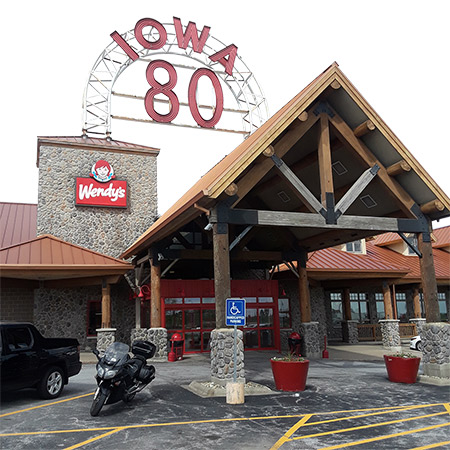 The remainder of the trip went much like the first half-day.
The remainder of the trip went much like the first half-day.
After getting eight hours of sleep, I got back in the saddle about 8:45 a.m. Saturday.
The day featured a stop at the Iowa 80 Truck Stop. The facility bills itself as the world’s largest truck stop, and I had gotten lunch there on my 2010 trip.
What I did not see on previous trips was the Iowa 80 Trucking Museum that’s just north of the truck stop. It contains dozens of trucks of many different makes and designs.
I got back on the road, and after a quick stop in Oskaloosa, Iowa, I rode to my destination for the day in Des Moines while trying to avoid hail storms that were moving through the area.
Sunday started well enough. I got a decently early start and began making my way toward northeast Colorado. As I got into Omaha, fatigue hit me again. About an hour later, I was finally ready to get back on the bike and keep moving.
I stopped in Kearney, Neb., to visit the Nebraska Firefighters Museum & Education Center. It is loaded with artifacts and a timeline of firefighting history in Nebraska. Behind the museum sits an elaborate memorial to fallen Nebraska emergency responders, which features an ambiance of honor and solace.
To this point, the weather had been dry, with temperatures ranging from comfortable to slightly warm.
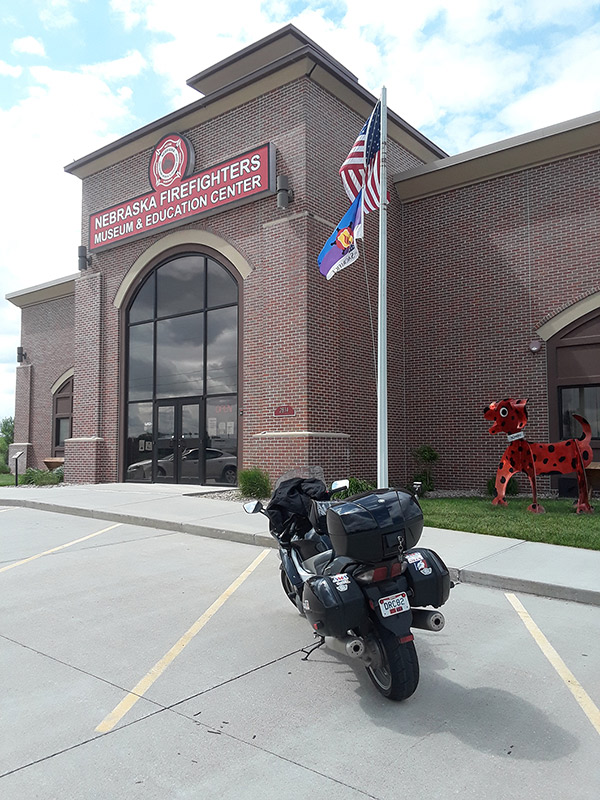
The Nebraska Firefighters Museum and Education Center in Kearney, Neb., preseves the history of firefighting in the state, and features an elaborate memorial to fallen emergency responders.
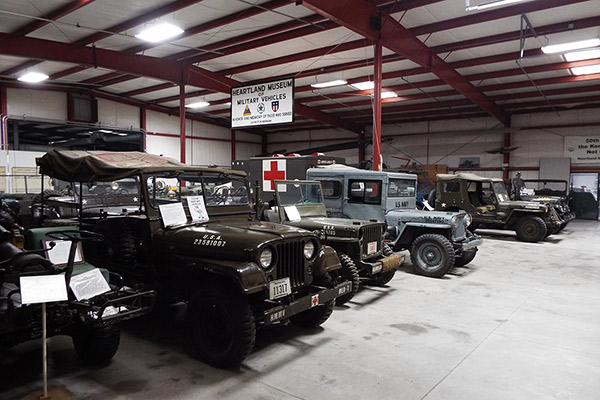
The Heartland Museum of Military vehicles was packed with a variety of artifacts, including motorcycles, jeeps, tanks and a couple helicopters.
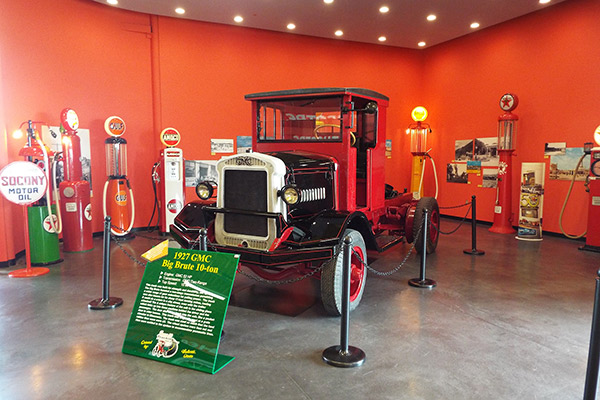
The Iowa 80 Trucking Museum operates on donations and contains a large collection of vintage commercial vehicles.
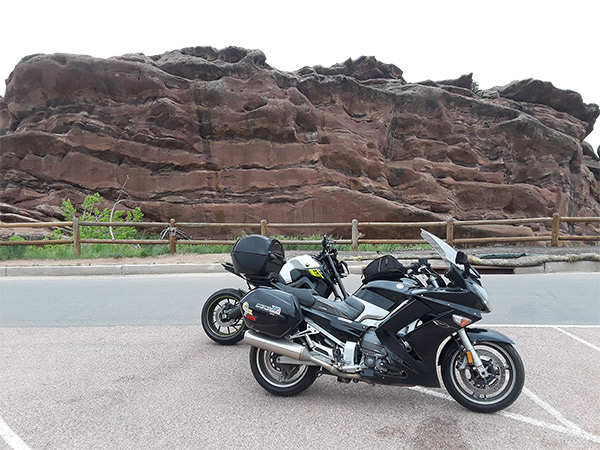
“Speedy” Dan Zosky provided a two-wheeled tour of the Denver area aboard his Yamaha MT-09. One of the stops was the Red Rocks facility on the west side of the Denver metro.
As I left Kearney, I spotted a nasty storm cell approaching from the south. When the lightning appeared, I decided to pull over. It took a while for the cell to move along, and figured my tussle with the weather was over for the day. Yet the worst lay ahead of me.
I made my way into Colorado as several storm cells began making their way through the region. When the lightning started, it was already dusk. I stopped at a rest area along I-76, but the lightning wasn’t clearing up.
My phone’s weather app said things were only going to get worse, so I made a run for it and got to my destination in Brush, Colo. I hate riding in the rain at night, and I got soaked. And lightning was flashing on three sides of me.
I made it to my hotel about 11 p.m. I had seen most of what I wanted to see that day, but fatigue and weather dulled the experience.
Monday, I got up and finished my ride into Denver.
I met Speedy Dan for brunch, and he gave me a two-wheeled tour of Denver. We stopped by the Thunder Valley motocross track to check out the preparations underway for the outdoor national, then headed over to Red Rocks Amphitheater.
The Red Rocks facility was amazing and, as an urban planning aficionado, I found it to be one of the most impressive creations of public space I have seen. The historic performing arts venue was packed with people using it for reading, exercising, walking and more.
After Red Rocks, Speedy Dan and I parted ways, and I headed to another urban planning-related site in Denver.
The Stapleton neighborhood on Denver’s northeast side had been the site of Denver’s main airport.
When the current Denver International Airport opened in 1995, the Stapleton Airport site was repurposed for residential and commercial use. All that is left of the old airport is its air traffic control tower. The imposing structure remains at the heart of the Stapleton neighborhood and has been converted to a restaurant.
The development is used in urban planning programs as a successful example of adaptive reuse of land.
After getting my fill of Stapleton, I headed north on I-25 toward Cheyenne, Wyo., and was already running late when I was delayed again by another storm. Yet, I was determined to make it to my planned stop at the Tree in the Rock.
The storm left much cooler temperatures in its wake, and the farther north and west I rode, the colder it got. The temperature gauge on my FJR1300 read 45 degrees when the Tree in the Rock came into sight.
I was cold and upset that I was running behind schedule, but as I pulled into the parking area in the median of I-80 near Buford, Wyo., none of that mattered. I had done it. I had made it back West. And this victory made all the setbacks worth it.
It was hard to not get back on I-80 West and take the journey farther. I looked down the exit ramp, my heart already accelerating away.
But with a big dark cloud ahead and an editor who expected me back at my desk on Thursday, I made the loop around the monument and started heading east.
Heading home
The trip back to Columbus was much the same as the trip out.
I got to stop at the Archway on Tuesday on my way back through Kearney, Neb. and also got to see some vintage military motorcycles at the Heartland Museum of Military Vehicles in Lexington, Neb.
However, the unpleasant weather really dampened (pun intended) the remainder of the trip. My fatigue only got worse, and I got stuck riding through a severe rain and hail storm Monday night.
On Tuesday, I found myself starting the day in a constant drizzle that didn’t clear up until I got to Omaha, and there were times that day I wondered if I’d ever see the sun again.
I ended up having to finish the ride Thursday morning, just barely getting to my desk in time for work.
Looking back
While I saw nearly everything I wanted to see, got to meet with a good friend and accomplished my goal of getting back out West, there is still a sense of letdown as I look back at my tour.
The stress of being constantly behind schedule and having to ride in dark, rainy conditions sapped a lot of the fun out of the excursion.
I enjoyed each and every destination I visited, but so much of the riding, which is the crux of any tour, was more anxiety-producing than it should have been.
The trip was both a personal accomplishment and an important and potentially life-saving lesson for me in the difference between riding experience and overconfidence. Motorcycles are wonderful machines, but long journeys can be unforgiving to the unprepared, regardless of how many miles or years we’ve ridden.
Michael Marino is the associate editor at the AMA.
Six tips for better touring
Although my western motorcycle adventure had its challenges, I learned a lot of new lessons on this ride—and was reminded of a lot of old ones.
Here are six tips to help make sure your ride goes as smoothly as possible.
1. Maintain your motorcycle. It’s no fun being stuck on the side of the road, so make sure your bike maintenance is up to date before leaving. Check your tire pressure and condition; make sure you won’t need to change the oil before you get back; ensure your other fluids are in good condition; and be sure all cables are lubricated and properly adjusted.
2. Pack heavy things low. Motorcycles handle best when the heaviest items are packed as low as possible. Some items, like a laptop, may not fit in saddlebags and may need to be packed in a top case or tail bag.
3. Don’t pack the night before leaving. Packing for a tour is not something to do in a rush. Getting stuck without the one tool you need or forgetting to pack extra clothes in case you get soaked in a rainstorm can ruin a tour. Try to pack when there’s no hurry, so you can get enough sleep the night before leaving.
4. Consider weight and comfort: Make sure you are comfortable with the bike’s handling when it’s fully loaded. Also, try riding away from home as far as you can on one tank of gas, then fill up and head home. If you’re not used to riding for more than an hour or two, this is very important. Whatever is marginally uncomfortable after riding for an hour becomes unbearable when on the road for seven or more hours a day.
5. Get plenty of rest. Riding a motorcycle isn’t like driving a car. The elements and wind blast can take a toll on the body, and the need to be hyperaware of your surroundings and maintain the bike’s balance takes a lot of energy. Plan on getting at least eight hours of sleep each night. Also, start riding early each morning to make sure you’re still riding in daylight, even if you get delayed.
6. Bring tools and gizmos. When covering long distances, especially through sparsely populated or mountainous areas, you can’t depend on things like cell phones to get you the travel information you need or to call for help. Carry a small CB radio (to call for help on channel 9), a weather radio, duct tape, zip ties, a flashlight and an atlas. Also make sure you have the tools to do basic repairs.

